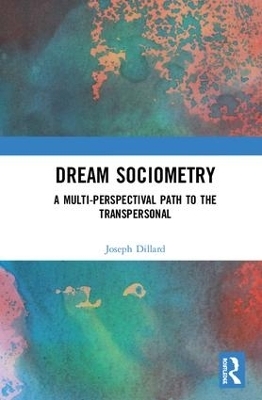
Dream Sociometry
Routledge (Verlag)
978-0-8153-5306-5 (ISBN)
This unique book is the first of two volumes that describe a new, transpersonal model for therapeutic work on dreams. Dream Sociometry, a form of Integral Deep Listening (IDL) life drama and dream character interviewing, contributes to the fields of application of the sociometric methods of J.L. Moreno and the use of sociometry in therapy, to support and direct personal development. The book describes an experiential, multi-perspectival integral life practice through accessing "emerging potentials," or perspectives that integrate, transcend, and include one's current context and predicament.
Dream Sociometry provides a thoroughly phenomenological approach, suspending interpretation as well as assumptions about the reality and usefulness of synchronicities, mystical experiences, waking accidents, dreams, and nightmares, in favour of listening to dream characters and personifications of important life issues in a respectful and integral way. It thereby provides an important doorway to both causal and non-dual awareness by accessing perspectives that personify both, and will open doors for those interested not only in dream research, but in reducing anxiety disorders, such as phobias and post-traumatic stress disorders, and seeing through the often literal and concrete interpretations that we often give both physical and mental illness as well as mystical experiences.
Offering a fresh and unique approach to both dreamwork and self-development through sociometric methodologies, this book will be of interest to researchers in the fields of psychodrama, sociometry, group psychotherapy, transpersonal, experiential and action therapies, as well as postgraduate students studying psychology and sociology.
Joseph Dillard is a psychotherapist and author of over 20 books on transpersonal development. He is the creator of Integral Deep Listening, a multi-perspectival integral life practice.
Preface
Introduction
1: What is Dream Sociometry?
2: Benefits of Dream Sociometry
3: The Origins of Dream Sociometry
4: Interviewed Dream Characters and Your Waking Roles
5: Enhancing Dream Recall
6: Recording Your Dreams
7: Purpose of the Dream Sociomatrix
8: The Dream Elements
9: Element Categorization
10: Making Predictions
11: Structure of the Dream Sociomatrix
12: Obtaining Interviewed Dream Character Preferences
13: Agreement in the Dream Sociomatrix
14: Ambivalence in the Dream Sociomatrix
15: Interviewed Character Categories and Attributes
16: Structure of the Dream Sociomatrix Commentary
17: Functions of the Dream Sociomatrix Commentary
18: Overview of Commentary Construction and Creation of the Action Plan
19: The Dream Summary Commentary
20: Constructing the Dreamage
21: Creating the Waking Commentary
22: The Identification Commentary
23: Designing Your Action Plan
24: The Dream Sociogram Commentary
25: The Dream Group Dynamics Commentary
26: What I Am Saying to Myself Is..
27: The Dream Group Feedback Commentary
28: Evaluating Your Predictions
29: Using Dream Sociometry with Waking Events
Appendix I: Ken Wilber Dies Commentaries
Appendix II: IDL Dream Interviewing Protocol
Appendix III: IDL Life Issue Interviewing Protocol
Index
| Erscheinungsdatum | 25.04.2018 |
|---|---|
| Zusatzinfo | 8 Halftones, black and white |
| Verlagsort | New York |
| Sprache | englisch |
| Maße | 156 x 234 mm |
| Gewicht | 498 g |
| Themenwelt | Geisteswissenschaften ► Philosophie |
| Geisteswissenschaften ► Psychologie ► Allgemeine Psychologie | |
| Geisteswissenschaften ► Psychologie ► Biopsychologie / Neurowissenschaften | |
| Geisteswissenschaften ► Psychologie ► Psychoanalyse / Tiefenpsychologie | |
| Medizin / Pharmazie ► Medizinische Fachgebiete ► Psychiatrie / Psychotherapie | |
| ISBN-10 | 0-8153-5306-5 / 0815353065 |
| ISBN-13 | 978-0-8153-5306-5 / 9780815353065 |
| Zustand | Neuware |
| Haben Sie eine Frage zum Produkt? |
aus dem Bereich


